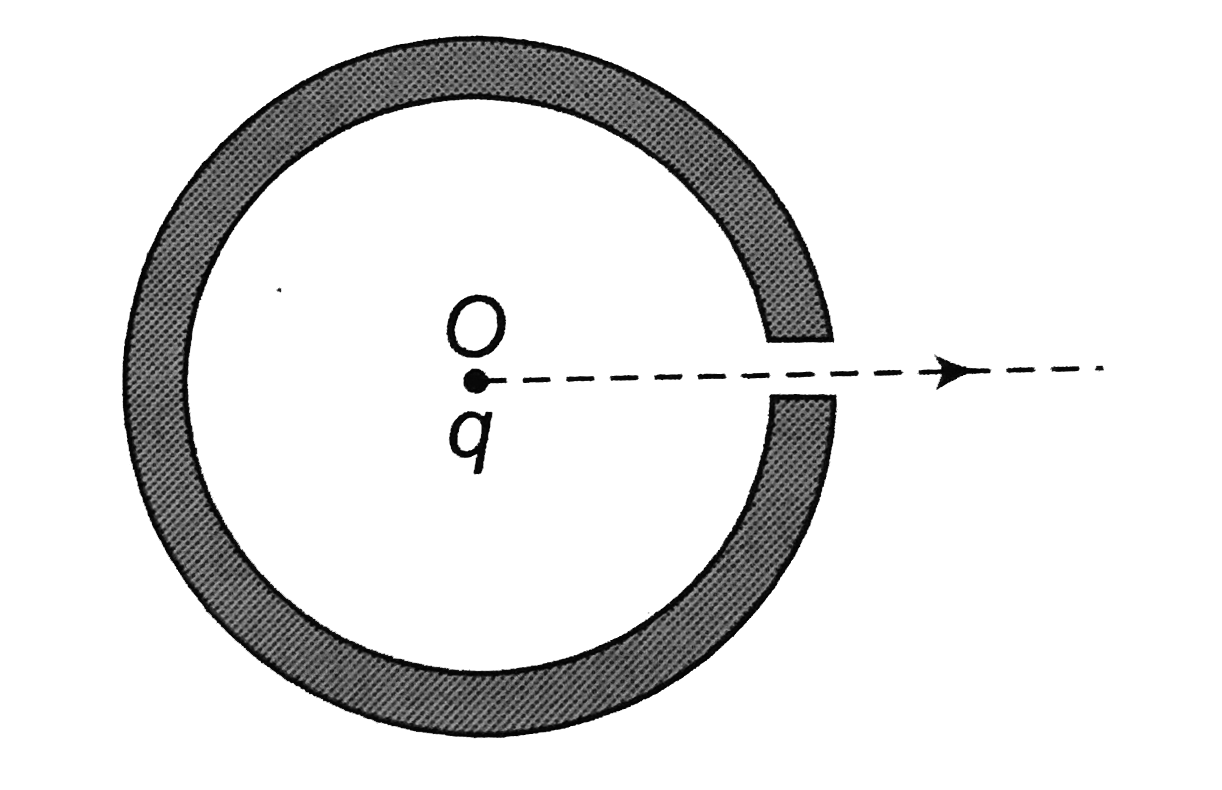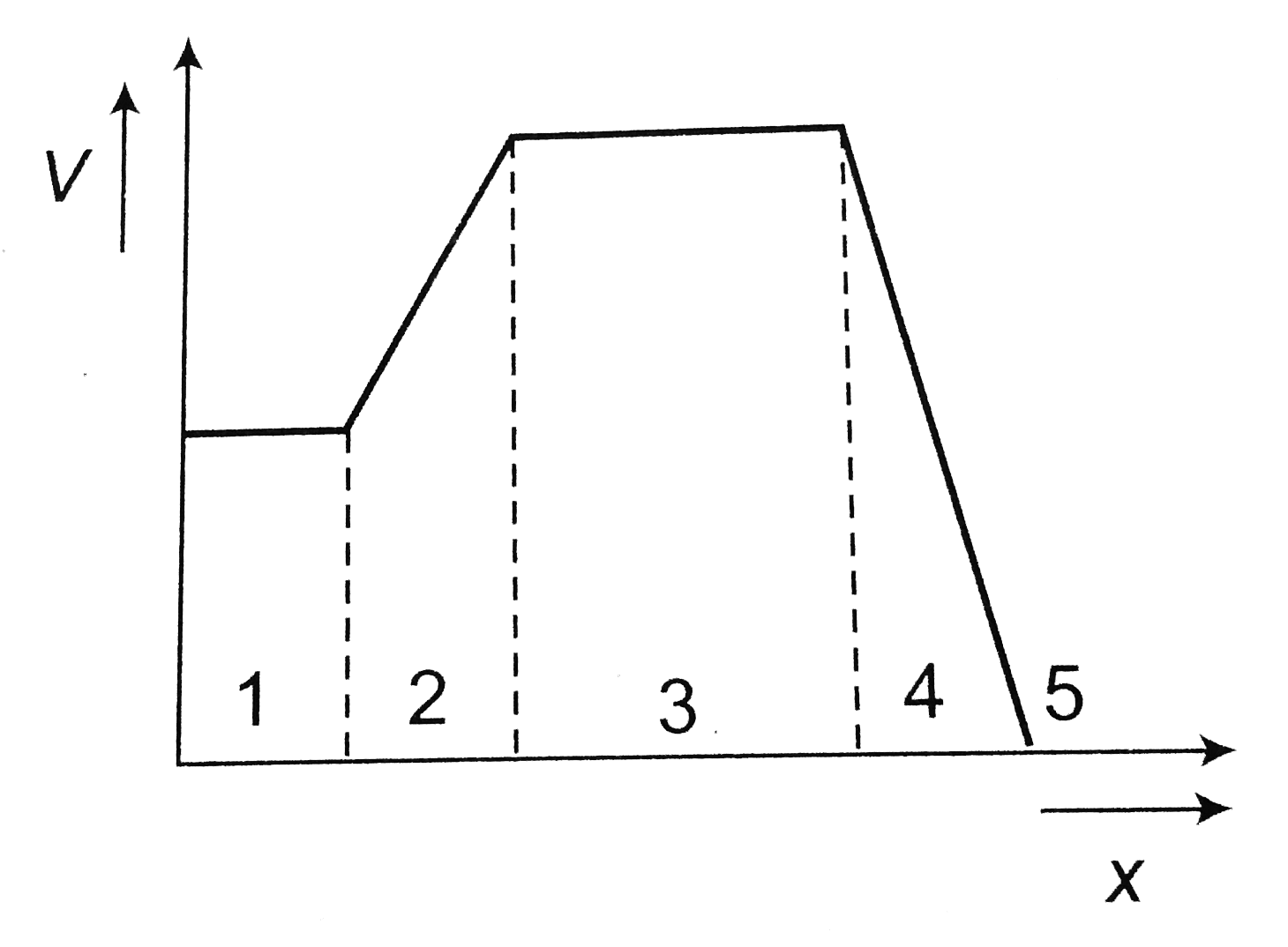Complete Solutions to (PRACTICE QUESTIONS) Single Correct Choice Type of chapter ELECTRIC POTENTIAL of Class 12 book with complete answers and questions
| Class 12 | PHYSICS |
| Chapter | ELECTRIC POTENTIAL |
| RESNICK AND HALLIDAY | (PRACTICE QUESTIONS) Single Correct Choice Type |
| Number Of Questions | 21 |
| Academic Year | 2023-24 |
Which one of the following statements best explains why it is possible to define an electrostatic potential in a region of space that contains an electrostatic field?
View SolutionTwo positive point charges are separated by a distance R. If the distance between the charges is reduced to R/2, what happens to the total electric potential energy of the system?
View SolutionTwo point charges are located at two of the vertices of a right triangle. If a third charge `-2q` is brought from infinity and placed at the third vertex, what will its electric potential energy be? Use the following values: `a=0.15 m , b=0.45 m, and q=2.0 xx 10^(-5)` C.
View SolutionIn total, 10 charges (5 of them are `+q` each and other 5 are `-q` each) are placed randomly on the circumference of a circle. The radius of the circle is R. The electric potential at the center of this circle due to these charges will be
View SolutionThe potential at a point distant x (mesured in `mum` ) due to some charges situated on the x-axis is given by `V (x)=(20)/(x^(2)-4)` V. The electric field at `x=4 mum` is given by
View SolutionA particle has a charge of `+1.5 mu C` and moves from point A to point B, a distance of 0.20 m. The particle experiences a constant electric force, and its motion is along the line of action of the force. The difference between the particle's electric potential energy at A and B is `EPE_(A) - EPE_(B)=+9.0 xx 10^(-4)` J. Find the magnitude and direction of the electric force that acts on the particle.
View SolutionElectric field_ on the axis of a small electric dipole at a distance r is `bar(E_1)` and_ at a distance of 2r on a line of perpendicular bisector is `bar(E_2)`. Then
View SolutionA charge is located at the center of sphere A (radius `R_(A)=0.0010` m), which is in the center of sphere B (radius `R_(B) = 0.0012` m ). Spheres A and B are both equipotential surfaces. What is the ratio `V_(A)//V_(B)` of the potentials of these surfaces?
View SolutionPoint A is located 0.25 m away from a charge of `-2.1 xx 10^(-9) C`. Point B is located 0.50 m away from the charge. What is the electric potential difference `V_(B)- V_(A) between these two points ?
View SolutionThe electrostatic potential inside a charged spherical ball is given by `phi=ar^2+b` where r is the distance from the centre and a, b are constants. Then the charge density inside the ball is:
View SolutionIdentical point charges of `+1.7 mu C` are fixed to diagonally opposite corners of a square. A third charge is then fixed at the center of the square, such that it causes the potentials at the empty corners to change signs without changing magnitudes. Find the sign and magnitude of the third charge.
View SolutionA positive charge `+q_1` is located to the left of a negative charge `-q_2`. On a line passing through the two charges, there are two places where the total potential is zero. The first place is between the charges and is 4.00 cm to the left of the negative charge. The second place is 7.00 cm to the right of the negative charge. What is the distance between the charges?
View SolutionOne particle has a mass of `3.0 xx 10^(-3) kg` and a charge of `+8.00 mu C`. A second particle has a mass of `6.0 xx 10^(-3)` kg and place and then released. The particles fly apart, and when the separation between them is 0.100 m, the speed of the `3.00 xx 10^(-3)` kg particle is 125 mis. Find the initial separation between the particles.
View SolutionTwo particles each have a mass of `6.0 xx 10^(-3)` kg. One has a charge of `+5.0 xx 10^(-6)` C. and the other has a charge of `-5.0 xx 10^(-6)` C. They are initially held at rest at a distance of 0.80 m apart. Both are then released and accelerate toward each other. How fast is each particle moving when the separation between them is one-third its initial value?
View SolutionA large solid sphere with uniformly distributed positive charge has a smooth narrow tunnel along its direction. A small particle with negative charge, initially at rest far from the sphere, approaches it along the line of the tunnel, reaches its surface with a speed `v`, and passes through the tunnel. Its speed at the centre of the sphere will be
View SolutionA point charge `q` is located at the centre `O` of a spherical uncharged coducting layer provided with small orifice. The inside and outside radii of the layer are equal to a and `b` respectively. The amount of work that has to be performed to slowly transfer the charge `q` from teh point `O` through the orifice and into infinity is

View SolutionThe figure gives the electric potential `V` as a function of distance through five regions on x-axis. Which of the following is true for the electric `E` in these regions ?

View SolutionA solid spherical conducting object has a nonzero charge on it. Which of the following statements is most appropriate?
View SolutionTwo conducting concentric spherical shells are given positive charges. Choose the correct outcome.
View SolutionWhich of the following statements about solid conductors in electrostatics is (are) true?
(I) The electric fie)d inside the conductor is always zero
(II) The electric potential inside the conductor is always zero
(III) Any net charge is on the surface
View SolutionA very large sphere having charge `Q` uniformly distributed on the surface s compressed uniformly till its radius reduces to `R`. The work done by the electric force in this process is :
View Solution
(PRACTICE QUESTIONS) Single Correct Choice Type questions and complete solutions for chapter ELECTRIC POTENTIAL of RESNICK AND HALLIDAY PHYSICS (HINGLISH) of Class 12
All Exercises from RESNICK AND HALLIDAY Class 12 PHYSICS ELECTRIC POTENTIAL
- (PRACTICE QUESTIONS) Integer Type
- (PRACTICE QUESTIONS) Linked Comprehension
- (PRACTICE QUESTIONS) Matrix-Match
- (PRACTICE QUESTIONS) More than One Correct Choice Type
- (PRACTICE QUESTIONS) Single Correct Choice Type
- (PROBLEMS)
- CHECKPOINT
- SAMPLE PROBLEM 24.01 Work and potential energy in an electric field
- SAMPLE PROBLEM 24.02 Distance, velocity, closest separation for charged particle projected from ∞ towards fixed particle
- SAMPLE PROBLEM 24.03 Locating equipotential surfaces
- SAMPLE PROBLEM 24.04 Finding the potential change from the electric field
- SAMPLE PROBLEM 24.05 Finding electric potential
- SAMPLE PROBLEM 24.06 Finding the potential
- SAMPLE PROBLEM 24.07 Net potential of several charged particles
- SAMPLE PROBLEM 24.08 Potential is not a vector, orientation is irrelevant
- SAMPLE PROBLEM 24.09 Net potential due to two charged particles
- SAMPLE PROBLEM 24.10 Potential due to line of charge
- SAMPLE PROBLEM 24.11 Finding potential of charged disk
- SAMPLE PROBLEM 24.12 Potential due to infinite sheet of charge
- SAMPLE PROBLEM 24.13 Potential at the surface of the outer shell
- SAMPLE PROBLEM 24.14 Field and potential inside a charged spherical shell
- SAMPLE PROBLEM 24.15 Point charge projected from a large distance towards center of fixed charged ring
- SAMPLE PROBLEM 24.16 Finding the field from the potential
- SAMPLE PROBLEM 24.17 Acceleration of charge of given potential
- SAMPLE PROBLEM 24.18 Electric field due to a dipole at a point on dipole axis
- SAMPLE PROBLEM 24.19 Resultant potential and electric field of dipoles
- SAMPLE PROBLEM 24.20 Dipole moment of combination of three charges
- SAMPLE PROBLEM 24.21 Potential energy of a system of three charged particles
- SAMPLE PROBLEM 24.22 Conservation of mechanical energy with electric potential energy
- SAMPLE PROBLEM 24.23 Finding potential on spherical conducting shell due to point charge kept outside the shell
- SAMPLE PROBLEM 24.24 Potential due to charges on three concentric shells
- SAMPLE PROBLEM 24.25 Charge and potential on a conductor that is earthed
- SAMPLE PROBLEM 24.26 Self-energy of a uniformly charged sphere
- SAMPLE PROBLEM 24.27 Electrostatic energy of two charged conducting shells, with and without earthing